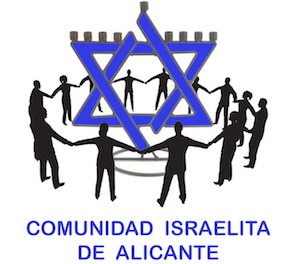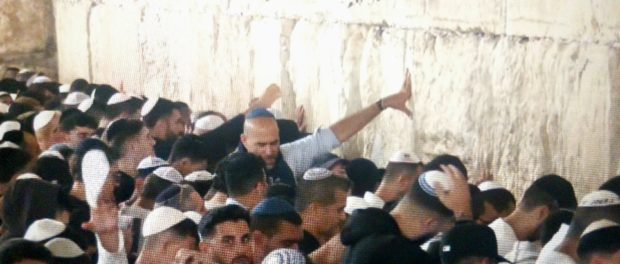Yom Kippur Tishrei 10, 5786/October 2, 2025
Morning Reading Leviticus 16:1-34 Numbers 29:7-11
The Yom Kippur morning Torah reading discuses the special Holy Temple service for this holiest day of the year. The highlights of the service were the High Priest‘s confession on behalf of Israel, his entry into the Holy of Holies amid a cloud of incense, and the dispatch of the Azazel Goat.
After the demise of Nadab and Abihu, Aaron‘s two eldest sons, G‑d instructed Aaron on the proper procedure for entering the Holy od Holies, once annually on Yom Kippur. On this day, the High Priest must don pristine white garments, and immerse in a mikvah (ritual pool). The High Priest’s personal sacrifice, a bullock, was brought forth, and upon it he confessed, atoning for sins which he may have committed, as well as the sins of his household.
Two goats were then brought. Upon them the High Priest randomly placed two lots, one marked “For God,” and the other “For Azazel.” The one earmarked “for G‑d” was designated as a sin-offering, while the other was prepared to be sent to “Azazel” (as will be described later). Aaron then confessed once again over his bullock, this time for the sins of the priestly tribe of Levi, and offered the bullock as a sin-offering.
The High Priest then entered the Holy of Holies chamber of the Holy Temple amid a cloud of burning incense. The bloods of the sacrificed bullock and goat were also sprinkled in the Holy of Holies as well as in the adjoining Holy chamber.
The High Priest concluded his service in the sanctuary of the Holy Temple. He then confessed over the Azazel Goat for the sins committed by all of Israel. This goat, which carried on its shoulders the sins of an entire nation, was then dispatched to the desert where it was thrown off a cliff. Aaron then donned his regular golden High Priest vestments, and offered two rams as burnt-sacrifices.
The individual who took the Azazel Goat to the wilderness needed to purify himself and his garments before returning to the Holy Temple. The same applied to those who burned the sin-offerings outside the Temple confines. The Torah then establishes an “eternal statute”: on the tenth day of the seventh month (Yom Kippur) we must afflict ourselves and abstain from work. For on this day G‑d atones for us, purifying us from all our sins.
Yom Kippur is dubbed the “Shabbat of Shabbats,” the once-a-year opportunity to atone for all our sins.
Maftir: The maftir reading details the various sacrifices offered in the Holy Temple on Yom Kippur — in addition to those described in the previous reading — along with the accompanying wine libations, oil and meal offerings.
Afternoon Reading ( Leviticus 18:1-30):
The Yom Kippur afternoon reading focuses on forbidden sexual relations. The lesson is twofold: a) It is intended to encourage anyone guilty of such transgressions to repent. b) It is a reminder that we must remain vigilant against indulging our temptations even when we are in a heightened state of spirituality and inspiration, and seemingly impervious to such base desires.
G‑d instructs the Israelites not to follow the immoral practices of the Egyptians and Canaanites. Instead, they are to observe His commandments, which bring their followers reward and life.
Continuing on the above theme, the Torah provides a list of prohibited sexual relationships. The list includes adultery, cohabiting with a menstruating woman, and incestuous relationships.
Third Aliyah (Maftir): The prohibitions against homosexuality and bestiality are mentioned. The Jews are warned that engaging in these forbidden relationships will result in their expulsion from the Land of Israel — a holy land which cannot tolerate immoral behavior.
Lectura matutina: Levítico 16:1-34 Números 29:7-11
La lectura de la Torá de la mañana de Yom Kipur describe el servicio especial del Templo Sagrado para este día más sagrado del año. Los momentos más importantes del servicio fueron la confesión del Sumo Sacerdote en nombre de Israel, su entrada al Santo de los Santos entre una nube de incienso y el envío de la cabra de Azazel.
Tras la muerte de Nadab y Abihú, los dos hijos mayores de Aarón, Dios le instruyó a Aarón sobre el procedimiento adecuado para entrar al Santo de los Santos, una vez al año en Yom Kipur. Ese día, el Sumo Sacerdote debía vestir vestiduras blancas y puras, y bañarse en una mikve (piscina ritual). Se trajo el sacrificio personal del Sumo Sacerdote, un becerro, y sobre él confesó, expiando los pecados que pudiera haber cometido, así como los pecados de su familia.
Se trajeron entonces dos cabras. El Sumo Sacerdote colocó al azar dos papeletas sobre ellas, una marcada “Para Dios” y la otra “Para Azazel”. La destinada “para Dios” se designó como ofrenda por el pecado, mientras que la otra se preparó para ser enviada a Azazel (como se describirá más adelante). Aarón confesó de nuevo sobre su becerro, esta vez por los pecados de la tribu sacerdotal de Leví, y ofreció el becerro como ofrenda por el pecado.
El Sumo Sacerdote entró entonces en el Santo de los Santos del Templo Sagrado entre una nube de incienso en combustión. La sangre del becerro y de la cabra sacrificados se roció en el Santo de los Santos y en la sala sagrada contigua.
El Sumo Sacerdote concluyó su servicio en el santuario del Templo Sagrado. Luego confesó sobre la cabra de Azazel por los pecados cometidos por todo Israel. Esta cabra, que llevaba sobre sus hombros los pecados de toda una nación, fue enviada al desierto, donde fue arrojada desde un acantilado. Aarón se vistió entonces con las vestiduras sacerdotales de oro, y ofreció dos carneros como sacrificio.
Quien llevaba a la cabra de Azazel al desierto debía purificarse a sí mismo y sus vestiduras antes de regresar al Templo. Lo mismo ocurría con quienes quemaban las ofrendas por el pecado fuera del recinto del Templo. La Torá establece entonces una ley eterna: el décimo día del séptimo mes (Yom Kipur) debemos ayunar y abstenernos de trabajar. Ese día, Dios nos perdona y nos purifica de todos nuestros pecados.
Yom Kipur se conoce como el «Sábado de los sábados», la única ocasión del año para obtener el perdón de nuestros pecados.
Maftir: La lectura del Maftir describe en detalle los diversos sacrificios que se ofrecían en el Templo Sagrado en el día de Yom Kipur, además de los que ya se mencionaron en la lectura anterior, así como las ofrendas de vino, aceite y pan que los acompañaban.
La lectura de Yom Kipur de la tarde se centra en las relaciones sexuales prohibidas. Su mensaje tiene dos aspectos: a) Invita a quienes hayan cometido tales transgresiones a arrepentirse. b) Nos recuerda que debemos estar siempre atentos para resistir las tentaciones, incluso cuando nos encontramos en un estado de mayor espiritualidad e inspiración, y aparentemente inmunes a tales deseos.
Dios instruye a los israelitas a no seguir las prácticas inmorales de los egipcios y cananeos. En cambio, deben observar sus mandamientos, que traen recompensa y vida a quienes los siguen.
Continuando con el mismo tema, la Torá enumera las relaciones sexuales prohibidas, incluyendo el adulterio, la relación con una mujer menstruante y el incesto.
Maftir Se mencionan las prohibiciones de la homosexualidad y la bestialidad. Se advierte a los judíos que practicar estas relaciones prohibidas conllevará su expulsión de la Tierra de Israel, una tierra santa que no tolera la inmoralidad.

